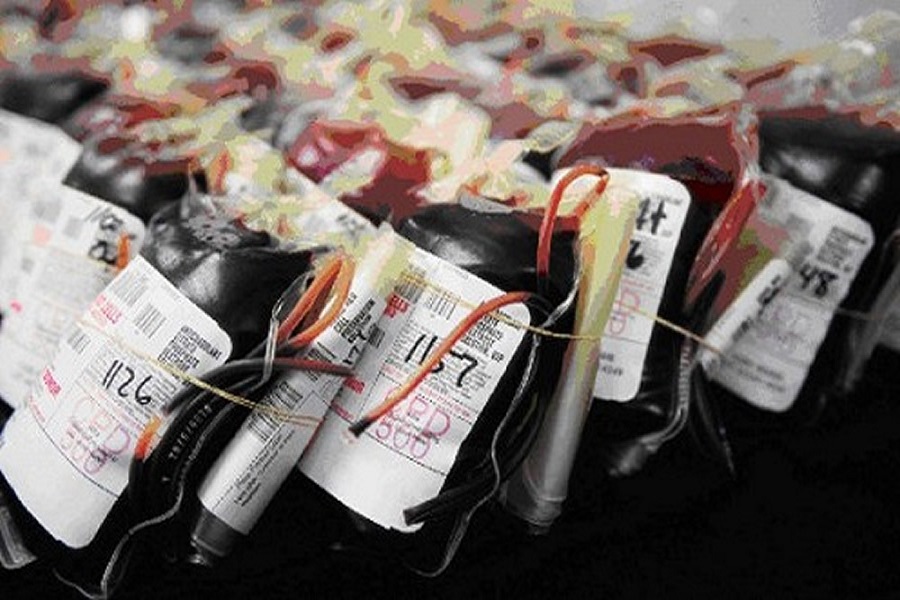How to be a blood donor
Blood banks operate on volunteer donations only. In the early days of blood transfusion, when a patient needed blood, the family and friends were notified to come to the hospital or clinic and donate their blood for that specific patient.
So many people were willing to donate their blood that the hospital or clinic often had more than they needed—and they would either have to give the blood to other patients, or “bank” the blood for future needs. The science of storing and utilizing blood got better and better, and eventually modern blood banks were brought into existence to handle the generous amount of blood that people were willing to donate.
Today, when someone wishes to be a blood donor, all they have to do is go to a local blood bank and spend an hour to give a unit of life saving blood, plasma, or platelets. One unit of donated blood can produce up to five units of blood components that may save the life of a patient or patients in need.
The blood donor experience
Blood donors are very special people. They give generously of themselves, their time, and their blood. They must undergo a rigorous exam and written history just to be qualified to donate. The initial exam involves disclosing sexual history, travel history, and a physical history.
The Food and Drug Administration (FDA) has carefully regulated the blood banking industry. They require many tests and conditions for blood banks. The goal of the FDA is to ensure that the nation’s blood supply is safe.
After the donor has passed the required tests determined by the FDA and other regulatory agencies, the donor is escorted to a donor station. The stations differ depending on the type of donation, but for a unit of whole blood, the area consists of a reclining chair or comfortable stretcher. The technician or technologist cleans the area for the phlebotomy and inserts the rather large gauge needle which will funnel the blood into a plastic donor bag pretreated with the necessary anticoagulants. The bag is on a scale and the phlebotomy will stop when a certain weight of blood is obtained. The tech will periodically mix the blood with the anticoagulants to keep the blood from clotting.
After the tech removes the phlebotomy equipment, the donor is observed for a while. A pressure bandage is applied to the puncture site and held in place with tape. After this observation period, if all is well, the donor is released to go get cookies and juice and the unit of blood is on its way to save a life.
The Blood Banking Process
- The donor unit contains special bar codes that follow the unit throughout its lifetime. These can be compared to lot numbers although the physical bags and tubing also have lot numbers.
- Pilot bags containing the bar coded information are used to separate and contain the various components of the blood such as: red cells, white cells, platelets, plasma, and cryoprecipitate (a clotting factor found in blood).
- Each component carries specific storage information – red cells are stored at 7°C (refrigerated); platelets are stored at 37°C (room temperature); plasma and cryoprecipitate are stored at -30°C (frozen).
- Each donor unit and component has divided tubing attached called segments or “pig tails” which are used for the various laboratory tests which must be run before the unit can be released for use in hospitals or clinics.
- The FDA has determined a series of tests which must be passed before it can be labeled as safe to use. These tests are for blood group and type, infectious or transmissible diseases and hemoglobin content among others.
- After the units have passed, they are stored properly and tracked forever. The unit is then released for distribution to whoever requests and needs the blood.
- A typical unit of blood will be requested by an area hospital for transfusion purposes. The hospital must repeat all compatibility tests and save the tracking information before giving it to a patient.
- Hospitals may even have their own blood bank system or a mini system for transfusion services. Daily inventories ensure that each unit of blood is utilized effectively or discarded in a biohazard container. Since the advent of modern blood banks, very little blood is wasted.
Typical donor screening questions
- Are you feeling healthy today?
- Have you read the educational materials?
- Have you taken aspirin in the last few weeks?
- Are you pregnant or have you delivered recently?
- Have you donated within the last 8 weeks?
- Do you have any communicable diseases?
- Do you have any medical issues at the present time?
- Have you been outside the U.S.A. or Canada?
- Have you been exposed to any infectious diseases?
- Have you been exposed to HIV or AIDS?
- Have you had sexual contact with a prostitute or a drug addict?
- Have you had contact with anyone diagnosed with hepatitis?
- Have you had a tattoo?
- Have you had homosexual contact or contact with someone who has?
- Have you had an ear or body piercing?
- Have you ever received a blood transfusion?
Where to find a blood bank in your area
A Google search for ” _________ (your town) blood banks” will reveal your local blood centers. In Austin, where I live, there are three centers for donating blood and one center for selling plasma to be used for commercial purposes.
Blood banks do not pay you for blood donations, as this is against the FDA rules. All blood donations in the U.S. is from volunteers only. There is a sound safety reason for this. Volunteer donors tend to be philanthropic and less likely to be drug addicts or engage in risky behavior.
Rewards for donating blood
Blood banks do reward their loyal donors. They provide cookies, juice and other treats for your enjoyment after donation. They provide movies or videos to watch while the donation is in progress.
Blood banks usually have some type of recognition program for repeat donors. They keep track of all blood donated and when you reach certain amounts you are inducted into the “gallon” club. When you have donated a gallon of blood, you will be awarded a t-shirt, mug or other reward to recognize that accomplishment.
Plus you get the warm, fuzzy feeling that comes with giving of yourself—and perhaps saving a life or two.
Working at a blood bank
- Blood banks need highly skilled technical personnel to work with and test all blood donations. A technologist or Medical Laboratory Scientist specializing in the field of immunohematology is in great demand by blood banks and hospitals.
- Technicians are also in demand for handling the blood collections and processing the units of blood.
- Delivery drivers are hired to shuttle the blood between various hospitals and clinics.
- Clerical personnel are needed to do intake interviews and keep track of all the required information needed for regulatory agencies.
- Housekeeping personnel are hired to keep the draw stations and labs squeaky clean at all times.

